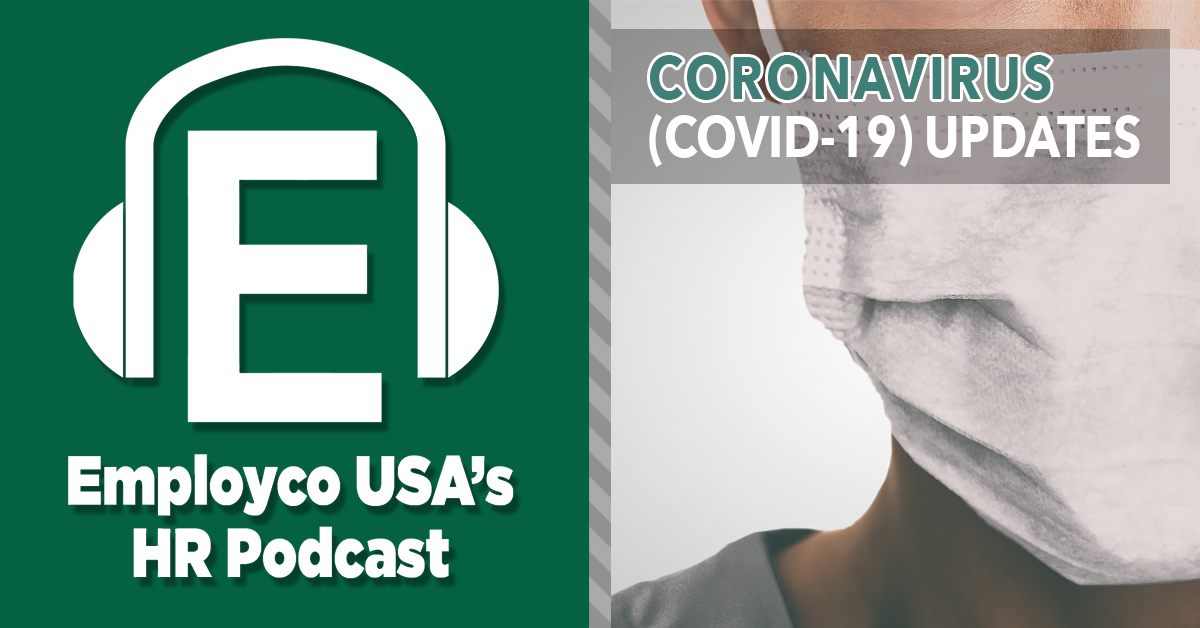
BULLETIN
March 24, 2020 (UPDATE)

We have created an employee-facing letter that companies can use as a template to edit and distribute to their employees. The letter includes tips for employees to consider related to the COVID-19 crisis and their employment (employee benefits, paid sick leave, family medical leave, and unemployment benefits). You can download a copy here or copy/paste from below:
Dear employee:
We want to take this opportunity to provide you with information and tips to help you during the COVID-19 (coronavirus) crisis. Although we’re providing this to you as our employee, these tips are likely applicable to the general public in the event you want to share this with your family and friends.
Employee Benefits
If you would like to make a mid-year change to your benefit elections (e.g., change a dependent care flexible spending account) as a result of a qualifying event, contact us to request a copy of the benefit enrollment change form.
Most health insurance plans will be required to provide coverage for COVID-19 diagnostic testing and related services to employees and their covered dependents, without cost sharing (like deductibles, copayments and coinsurance) during the national emergency period.
Paid Sick Leave and Family Medical Leave (at companies with less than 500 employees)
If you are unable to work or telework because of any of the following 6 conditions, contact us because you may be eligible for a certain level of pay continuation:
- subject to a federal, state or local quarantine or isolation order related to COVID-19;
- advised by a health care provider to self-quarantine due to COVID-19 concerns;
- experiencing COVID-19 symptoms and seeking medical diagnosis;
- caring for an individual subject to a federal, state or local quarantine or isolation order or advised by a health care provider to self-quarantine due to COVID-19 concerns;
- caring for the employee’s child if the child’s school or place of care is closed or the child’s care provider is unavailable due to public health emergency; or
- experiencing any other substantially similar condition specified by the Secretary of Health and Human Services in consultation with the Secretary of the Treasury and the Secretary of Labor.
If you are diagnosed with COVID-19, please contact us immediately.
Unemployment Benefits
If an employee is subject to a lay-off, furlough or a reduction in hours, he/she may file for unemployment compensation. Unemployment insurance is a state-operated insurance program designed to partially replace lost wages when you are out of work. Visit your state’s department of employment security or unemployment insurance website for more information or to apply for benefits.
We recognize this is a time of great stress and uncertainty. We hope you and your family and friends are safe and healthy.
Should you have any questions, please feel free to contact me.
-(INSERT authorized representative’s name, job title, phone number, and email address)
Continue reading →
 In order to respond to the continuing COVID-19 crisis which has left millions of people out of work and the economy on the brink of disaster, health insurance and employee benefits are being temporarily revamped to mitigate these pressing concerns.
In order to respond to the continuing COVID-19 crisis which has left millions of people out of work and the economy on the brink of disaster, health insurance and employee benefits are being temporarily revamped to mitigate these pressing concerns.



